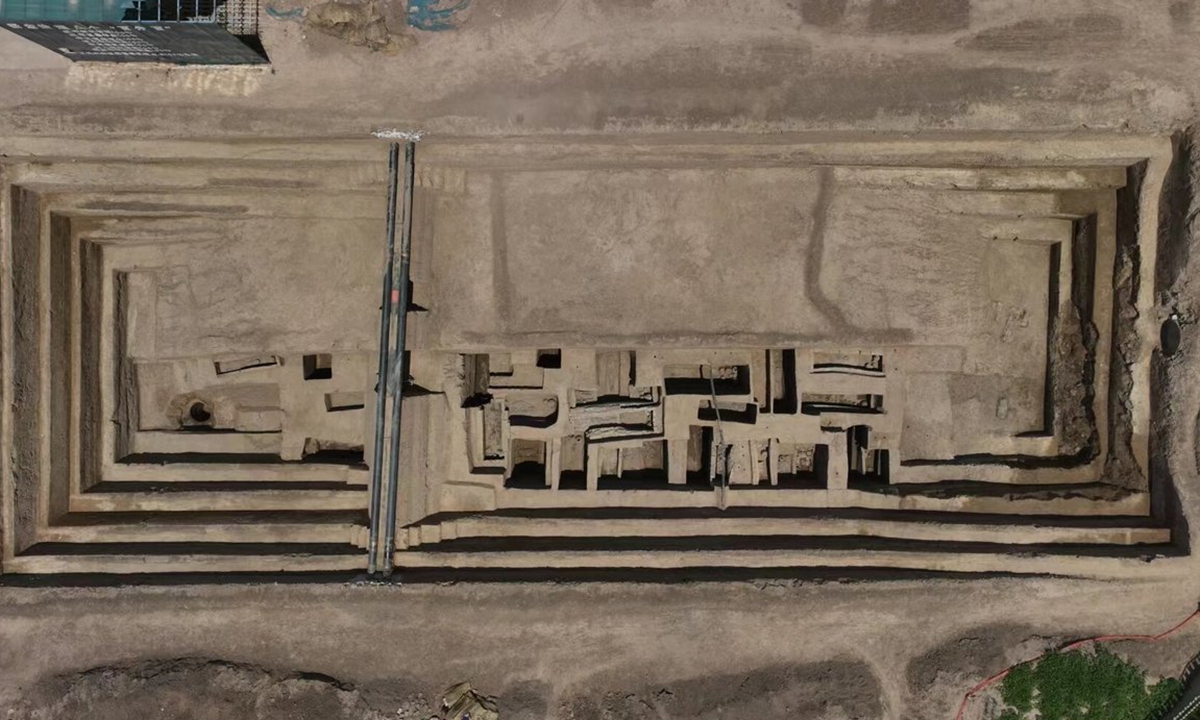
Photo:CCTV
The mystery of an archaeological site located in Puyang, Central China's Henan Province, was recently unveiled, revealing it was once an ancient Chinese city called "Gan" from the Warring States Period (475BC-221BC) to the Han Dynasty (206BC-AD220).
The ancient ruin is divided into two parts by a grand wall. More than 40 ancient tombs have been discovered. Sharing the same long and narrow design, these tombs have produced a prolific number of burial objects such as bronze mirrors, pottery wares, and also chess pieces.
Archaeologist Qu Fulin told the Global Times that based on the tombs' long and narrow configuration as well as the abundant pottery and bronze relics, they "were very likely built during the Han, particularly the Western Han Dynasty [206BC-AD25]."
"The discovery of the chess pieces is also interesting. They reflect ancient Chinese people's leisure life as well as the tomb owner's social status and the one's lifestyle," Qu told the Global Times.
A batch of bone slips, 10 pieces in total, are the rarest and most surprising item among discovered relics from the site. Each was inscribed with the ancient Chinese ordinal system known as the 10 Heavenly Stems and 12 Earthly Branches, or Tiangan Dizhi in Chinese. The remains of cinnabar paint were found on the surface of these bone slips.
Xiong Gang, an expert on Chinese folk culture, told the Global Times that due to the precious nature of bone as a carving material, those slips were unlikely to have been used as a calendar despite the presence of the 10 Heavenly Stems and 12 Earthly Branches, which were mainly associated with ancient Chinese astronomical calendars.
Those bone slips were most likely objects used for "fortune-telling activities" and "ancient sacrificial ceremonies," Xiong emphasized. He also added that those bone slips were "often made of the bones of animals like oxen," and they were very representative of Western Han Dynasty culture.
Following the unearthing of the archaeological site, the history of the city of Gan was also unveiled. It was an ancient regime that was once a vassal state dating back to the Western Zhou Dynasty. Similar to the city, there was another ancient city called "Qi" dating back to the Spring and Autumn Period (770BC-476BC) that was also founded in Puyang.
The excavation project was carried out by the Henan Provincial Institute of Cultural Heritage and Archaeology. Li Yipi, an associate researcher of the institute, said that the new discovery contributes to the future archaeological investigation of the history of Puyang.
"The discovered ancient city also sheds light on studies into the urban planning and construction systems of the Han Dynasty," Qu told the Global Times.
URL: https://www.seeglobalnews.com/read-3147.html